
Ingredient
Chili peppers
The Fiery Gems of Spice
Chili peppers come in a variety of shapes, sizes, and heat levels, ranging from mild to extremely spicy. They have a thin, waxy skin and a fleshy interior filled with seeds. The flavor of chili peppers can vary from fruity and sweet to smoky and earthy, depending on the variety. They offer a fiery heat that can range from a gentle warmth to a tongue-tingling spiciness. The vibrant colors of chili peppers, such as red, green, yellow, and orange, add visual appeal to any dish.
Origins and history
Chili peppers have a rich history that dates back thousands of years. They are believed to have originated in the Americas, specifically in Mexico and Central America, where they have been cultivated for over 6,000 years. Chili peppers played a significant role in the cuisines of ancient civilizations like the Mayans and Aztecs. They were highly valued for their medicinal properties and were even used as currency. With the arrival of European explorers, chili peppers were introduced to other parts of the world, including Asia and Africa, where they quickly became integrated into local cuisines.
Nutritional information
Chili peppers are low in calories and fat, but rich in vitamins and minerals. They are an excellent source of vitamin C, vitamin A, and potassium. They also contain capsaicin, a compound that gives them their characteristic heat and offers various health benefits, including pain relief and improved digestion.
Allergens
Some individuals may be allergic to chili peppers, especially those with a sensitivity to nightshade vegetables. Symptoms of an allergic reaction may include itching, swelling, or difficulty breathing. It is advisable to exercise caution and consult a healthcare professional if you suspect an allergy.
How to select
When selecting chili peppers, look for ones that are firm, glossy, and free from blemishes or wrinkles. The color of the pepper should be vibrant and consistent. The heat level can vary, so choose according to your preference. Smaller peppers tend to be hotter than larger ones. If you prefer milder heat, remove the seeds and white pith before using.
Storage recommendations
To prolong the freshness of chili peppers, store them in a paper bag or airtight container in the refrigerator. They can last for up to two weeks. Alternatively, you can freeze chili peppers by blanching them briefly in boiling water, then placing them in a sealed freezer bag. Frozen peppers can be stored for up to six months.
How to produce
Chili peppers can be grown at home in pots or in a garden. They require a warm climate, plenty of sunlight, and well-drained soil. Start by planting seeds or seedlings in the spring or early summer. Regular watering and fertilization will help the plants thrive. Harvest the peppers when they reach the desired size and color.
Preparation tips
Chili peppers can be used in a variety of dishes and cuisines. They are commonly used in salsas, hot sauces, curries, stir-fries, and marinades. They can be stuffed, roasted, grilled, or pickled. The heat of chili peppers can be balanced with ingredients like citrus, dairy, or sweeteners. Use caution when handling chili peppers, as the oils can cause skin and eye irritation. It is recommended to wear gloves or wash hands thoroughly after handling.
Substitutions
Jalapeno peppers, serrano peppers, or crushed red pepper flakes can be used as substitutes for chili peppers. However, keep in mind that the heat level may vary, so adjust accordingly. If you prefer a milder flavor, bell peppers can be used as a non-spicy alternative.
Culinary uses
Chili peppers are widely used in Mexican, Thai, Indian, and Korean cuisines. They are an essential ingredient in dishes such as chili con carne, salsa, curry, kimchi, and paprika. They add heat and flavor to soups, stews, sauces, and marinades. Chili peppers are also popular in Tex-Mex and Southwestern cuisine, where they are used in dishes like enchiladas, tacos, and chili.
Availability
Chili peppers are cultivated and consumed in many countries around the world. They are commonly found in Mexico, India, Thailand, China, Korea, and the United States. They thrive in warm climates and are often associated with regions that have a spicy culinary tradition.
More ingredients from this category

Capsicum baccatum
The Fiery Delight: Unveiling the Secrets of Capsicum Baccatum

Capsicum annuum hot cultivars
The Fiery Spectrum: Exploring Hot Capsicum Cultivars

Rocoto capsicum
The Fiery Peruvian Pepper

Tabasco capsicum
The Fiery Elixir of Tabasco
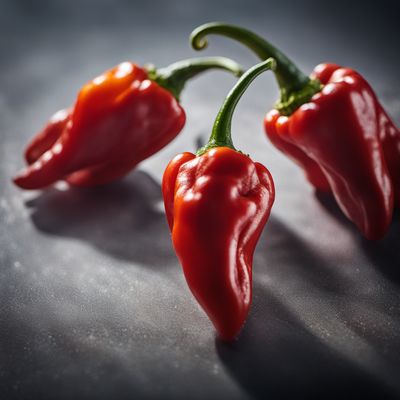
Chinese capsicum
"The Fiery Spice of the Orient: Exploring Chinese Capsicum"
Recipes using Chili peppers » Browse all

Chinese Spicy Clam Stir-Fry
Fiery Clam Delight: A Spicy Twist on Chinese Cuisine
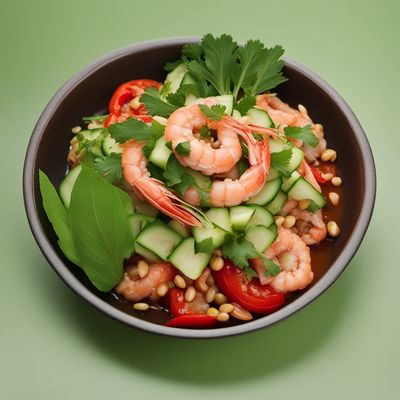
Peranakan-style Feiersténgszalot
Nyonya-inspired Luxembourger Salad

Southeast Asian-inspired Grilled Beef Sandwich
Spicy Lemongrass Beef Banh Mi: A Fusion of Flavors

Hunan-style Feijão Tropeiro
Spicy Hunan Feijão Tropeiro: A Fusion of Brazilian and Chinese Flavors
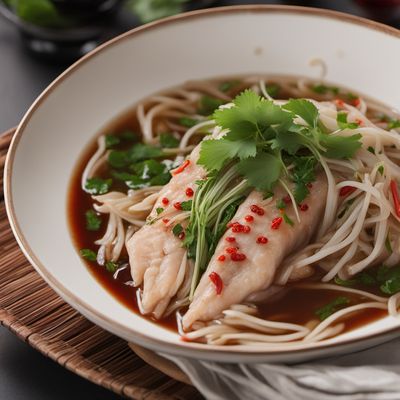
Spicy Fish Hot Pot with Lotus Root and Enoki Mushrooms
Fiery Seafood Delight: A Chinese Hot Pot Adventure
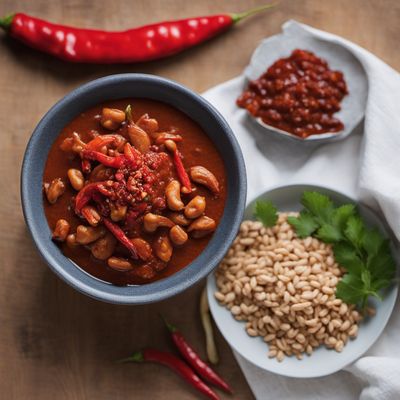
Palembang-style Peanut Sauce
Spicy and Tangy Palembang Peanut Sauce: A Burst of Flavors

Balinese Spicy Shredded Chicken (Ayam Pelalah)
Fiery Delight: Balinese Spicy Shredded Chicken

Grilled Spiced Chicken with Coconut Sauce
Malaysian Delight: Grilled Spiced Chicken with Creamy Coconut Sauce

Phat Kaphrao with a Twist
Fiery Basil Stir-Fry with a Twist
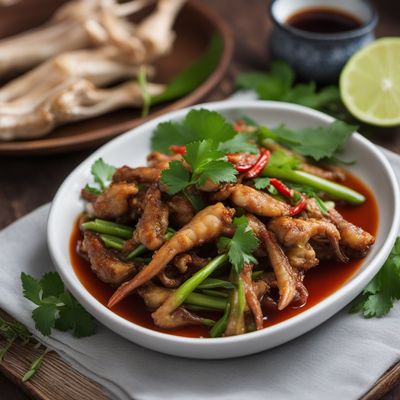
Thai-style Spicy Frog Legs
Fiery Frog Legs: A Thai Twist on a Spanish Delicacy

Chả cá Lã Vọng - Vietnamese Turmeric Fish with Dill
Golden Delight: A Flavorful Journey with Chả cá Lã Vọng

Peranakan-style Coconut Heart of Banana Blossom Curry
Nyonya Delight: Fragrant Coconut Curry with Banana Blossom Hearts